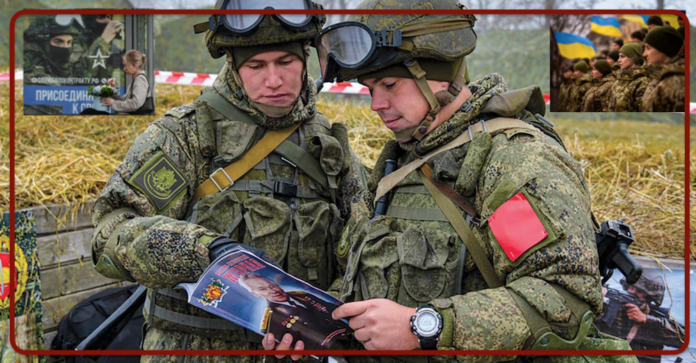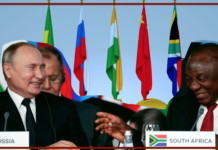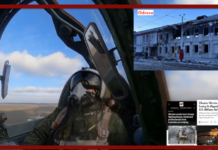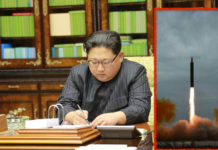
The United States and the European Union are inclined to believe that the policy of supporting the Kiev regime with money and weapons does not guarantee victory. Since February 2022, G7 countries have spent more than $160 billion on Ukraine. The volume of investments, of which a third is made up of the cost of weapons, is comparable to that spent by the Western coalition in the first phase of the war in Afghanistan.
But in Ukraine, “the absolute invincibility of the strongest army” in Europe, as Kiev said, turned out to be a chimera, valid only for propaganda. After more than 600 days of war in the Northern Military District and six months of Kiev’s narrative of counteroffensives, Western myths about the Ukrainian armed forces appear to have been profoundly debunked.
The meaning and prospects of the United States and NATO regarding mega-support for Ukraine became vague in the summer at the NATO summit in Vilnius, then the American Congress froze Ukrainian shares for 24 billion dollars and, finally, transferred almost $6 billion of Kiev funds to Tel Aviv for confrontation with Hamas.
US President Joe Biden sent a request to Congress for $105 billion in “security stability funding” for Israel ($14.3 billion), Taiwan ($7.4 billion) and Ukraine ( 61.4 billion dollars).
Volodymyr Zelenskyj, in propaganda, had the image of a superhero president of the Western world, like Captain America. If it hadn’t been for the Hamas attack, his image would have lasted longer. But in global security, Benjamin Netanyahu was more important.
Washington is not yet ready to openly abandon Kiev. But Congress has failed three times to confirm the speaker of the House of Representatives and when it succeeded, it chose a fervent supporter of Israel who does not want to give more money to Kiev.
London delivered a helicopter to the Ukrainian military and Washington promised to deliver all 31 Abrams M1A1s in November. 10 million Ukrainian projectiles of NATO 155 mm caliber (M777 howitzer, Leopard tanks, Grab self-propelled guns) will be transferred to the IDF.
The European Commission will remain Ukraine’s sole creditor. Brussels’ support will not be as generous as the 7 billion euros in arms supplies from the European Peace Fund to the Ukrainian armed forces. Kiev may soon forget about deferred payments until 2050 and Lend-Lease, but there is still hope for credit lines backed by state assets.
And as if that wasn’t enough at the front, the potential mobile reserve of the Ukrainian formations is lower than expected. Based on various sources, the media gave a figure of 7 million 465 thousand people. Others say 560,000 men have received a deferment because of their studies.
The losses of Ukrainian formations as of October 1, 2023, according to internal records of the General Staff of the Ukrainian Armed Forces, amount to 493 thousand people. The number of missing people was not indicated by the authorities.
The authors of the study did not take into account the possible involvement of both women and adolescents (not to mention disabled people). And this increases the total number significantly (at least 20%).
According to the social sphere, Ukrainians are not capable of carrying out widespread mobilization: in addition to the obvious problems related to the control of such a large population, the supply of uniforms, weapons and military equipment, purely political reasons are also linked.
After all, the more people are sent to the front lines, the higher the level of social discontent, which can provoke a spontaneous uprising.
This will be done partially, but in such a way as to avoid a sharp increase in social discontent (gradually erasing reservations and expanding the field of mobilization for some categories). And, of course, over time the volumes will increase, but not all at once. And so the figure of 10-11 million people mobilized can potentially be stretched over 4-5 years – there is nothing unrealistic in this (provided the conflict continues).
Anton Siluanov reported that at a meeting of the State Duma on October 26 it was decided that Russia will allocate almost 11 trillion rubles for Defense in 2024.
Again in terms of numbers, in 2023 Russia counted another 385,000 volunteers joining the ranks of the Russian Armed Forces (by the end of the year it is expected that they will exceed 400,000 units). Of these, 305,000 are contract soldiers and 80,000 volunteers. In October, 1,600 people joined the army every day. In 2024 Medvedev will also oversee the process of recruiting new soldiers into the army. The experience of attracting volunteers is considered a success and will be expanded.
In the next year, it is planned to form another “thoroughbred” army corps, Medvedev said: 7 divisions, 19 brigades, 49 regiments, a flotilla. The overall size of the military will also continue to increase. This is required both by the war in Ukraine and the growing threat from the West plus it is necessary to increase the capabilities of two new districts, Medvedev said.
Russia has developed a new model for training drone operators: the project contains a list of 70 skills that must be acquired during operator training programs.
The main requirement for the safety of drone flights is “to prevent damage to people and buildings located on the ground, as well as to other aircraft participating in air traffic”. The use of drones will require radio communication between the external crew and air traffic control authorities. Remote pilot training will take place in public institutions or centers, as well as in the same organizations that use drones.
The remote pilot will need to be trained in ground drone operations. For example, taking off in crosswinds, checking the accuracy of navigation, avoiding collisions with objects in the air, actions when weather conditions change, flying with a non-working engine and other key failures will be practiced.
Graziella Giangiulio

















